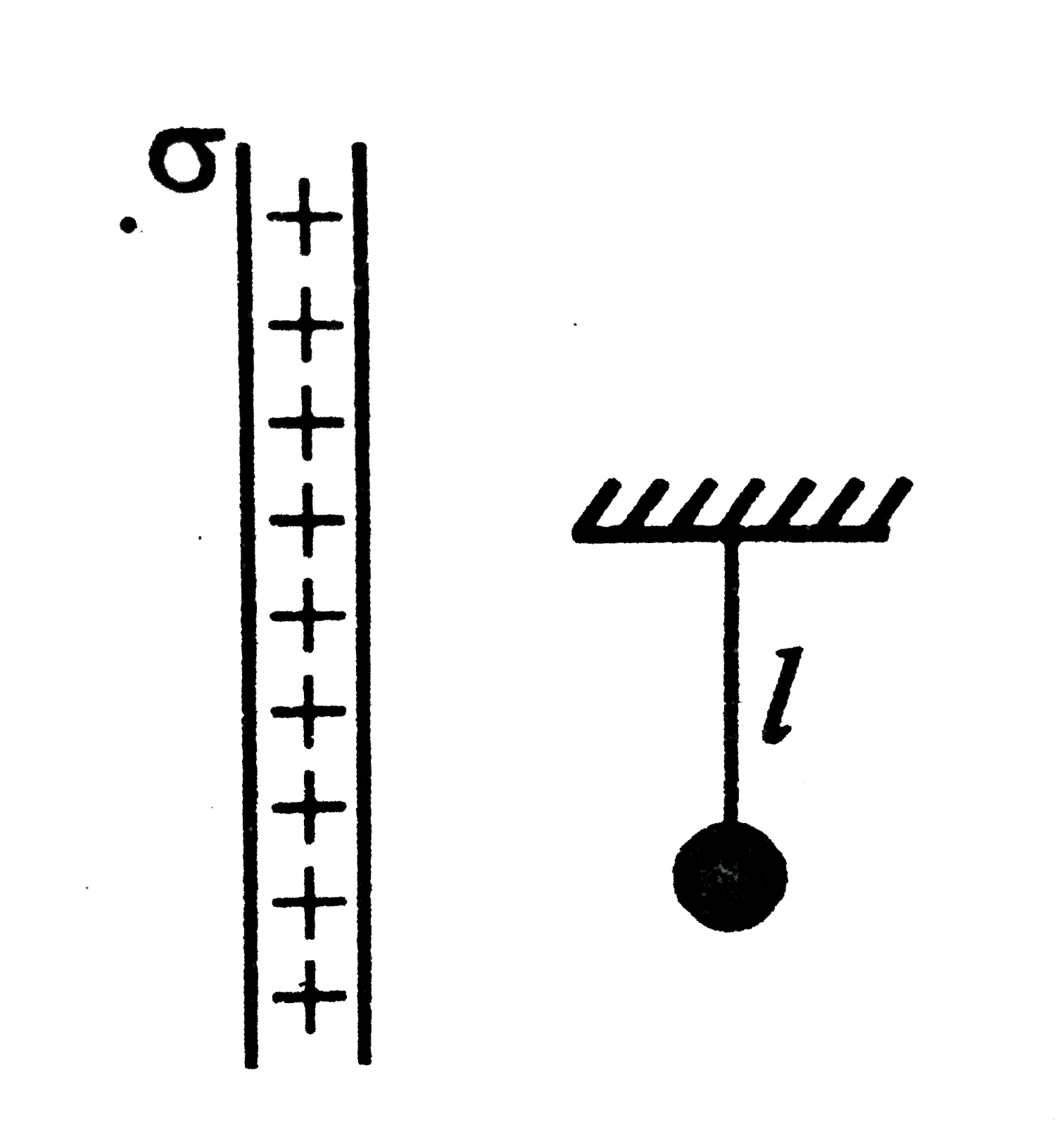Consider a uniform electric field E=3×103ˆi N/C (a) what is the flux of this field thriought a square of 10 cm on a side whose plane is parallel to the yz plane (b) hwhat is the flux through the same a 60∘m angle with the x axis Solution in Gujrati
ϕ=EScosθ=3×103×[10×10−2]2×cos60∘=3×103×10−2×1/2=15Nm2/C
Topper's Solved these Questions
- MISCELLANEOUSBOOK - ALLEN CHAPTER - MISCELLANEOUSEXERCISE - Part -II Example Some worked out Examples
1 Videos
- MISCELLANEOUSBOOK - ALLEN CHAPTER - MISCELLANEOUSEXERCISE - Exercise-01
87 Videos
- MISCELLANEOUSBOOK - ALLEN CHAPTER - MISCELLANEOUSEXERCISE - Question
1 Videos
- KINEMATICS (MOTION ALONG A STRAIGHT LINE AND MOTION IN A PLANE)BOOK - ALLEN CHAPTER - KINEMATICS (MOTION ALONG A STRAIGHT LINE AND MOTION IN A PLANE)EXERCISE - BEGINNER S BOX-7
8 Videos
- PHYSICAL WORLD, UNITS AND DIMENSIONS & ERRORS IN MEASUREMENT BOOK - ALLEN CHAPTER - PHYSICAL WORLD, UNITS AND DIMENSIONS & ERRORS IN MEASUREMENT EXERCISE - EXERCISE-IV
7 Videos
Similar Questions
For spherically symmetrical charge distribution, electric field at a distance r from the centre of sphere is →E=kr7→r, where k is a constant. What will be the volume charge density at a distance r from the centre of sphere?
View SolutionA stone is dropped into a quiet lake and waves move in circles speading out radially at the speed of 5 cm/s. At the instant when the radius of the circular wave is 8cm, how fast is the enclosed area increasing?
View SolutionA simple pendulum of length l and bob mass m is hanging in front of a large nonconducting sheet having surface charge density σ. If suddenly a charge +q is given to the bob & it is released from the position shown in figure. Find the maximum angle through which the string is deflected from vertical .
 .
.
View SolutionA football player kicks a ball at an angle of 30∘ with an initial speed of 20 m/s. Assuming that the ball travels in a vertical plane, calculate (a) the time at which the ball reaches the highest point (b) the maximum height reached (c) the horizontal range of the ball (d) the time for which the ball is in the air, (g=10m/s2)
View SolutionAssertion : Gravitational forces do not depend on the medium between the masses.
Reason : Mediating particle responsible for gravitational force is graviton.
View SolutionConsider a uniform electric field E=3×103ˆiN/C. (a) What is the flux of this field through a square of 10 cm on a side whose plane is parallel to the yz plane ? (b) What is the flux through the same square if the normal to its plane makes a 60∘ angle with the x-axis ?
View SolutionConsider a uniform electric field E=3×103ˆiN/C. (a) What is the flux of this field through a square of 10 cm on a side whose plane is parallel to the yz plane ? (b) What is the flux through the same square if the normal to its plane makes a 60∘ angle with the x-axis ?
View SolutionConsider a uniform electric field E=3×103N/C. (a) What is the flux of this field through a square of 10 cm on a side whose plane is parallel to the yz plane? (b) What is the flux through the same square if the normal to its plane makes a 60∘ angle with the x-axis?
View SolutionConsider a uniform electric field E=3×103ˆiN/C. A square of 10 cm on a side whose plane is parallel to the yz plane.
What is the flux through the same square if the normal to its plane makes a 60∘ angle with the x-axis?
View SolutionConsider a uniform electric field vecE=3xx10^(3)hatiNC^(-1) a. Whate is the flux of this field through a square of 0.1 m on a side whose plane is parallel to the y-z plane? b. What is the flux through the same square if the normal to its plane makes a 60 angle with x-axis?
View SolutionGiven a uniform electric field →E=5×103ˆiN/C, find the flux of this field through a square of 10cm on a side whose plane is parallel to the y - z plane. What would be the flux through the same square if the plane makes a 30∘ angle with the x-axis?
View SolutionConsider a uniform eleceric field =3×103ˆiN/C.
a. What is the flux of this field through a square of 10cm on a slide whose plane is parallel to the yz plane?
b. What is the flux through the same square if the moral to its plane makes a 60∘ and with the satis?
View SolutionConsider a uniform electric field E=3×103ˆi N/C (a) what is the flux of this field through a square of 10 cm on a side whose plane is parallel to the yz plane (b) what is the flux through the same square if the normal to its plane makes a 60∘ angle with the X axis ?
View SolutionConsider a uniform electric field E= 3xx10^(3) hati N/C (a) what is the flux of this field thriought a square of 10 cm on a side whose plane is parallel to the yz plane (b) hwhat is the flux through the same a 60^(@) m angle with the x axis
View SolutionConsider a uniform electric field E=3×103ˆiN/C. (a) What is the flux of this field through a square of 10 cm on a side whose plane is parallel to the yz plane ? (b) What is the flux through the same square if the normal to its plane makes a 60∘ angle with the x-axis ?
View Solutionconsider a uniform electric field oversetto E =3xx 10^(3) hati N//C What is the flux of this field through a square of 10 cm on a side whose plane is parallel to the yz plane? (b) What is the flux through the same square if if the normal to its plane makes a 60^(@) angle with the x-axis?
View Solution
